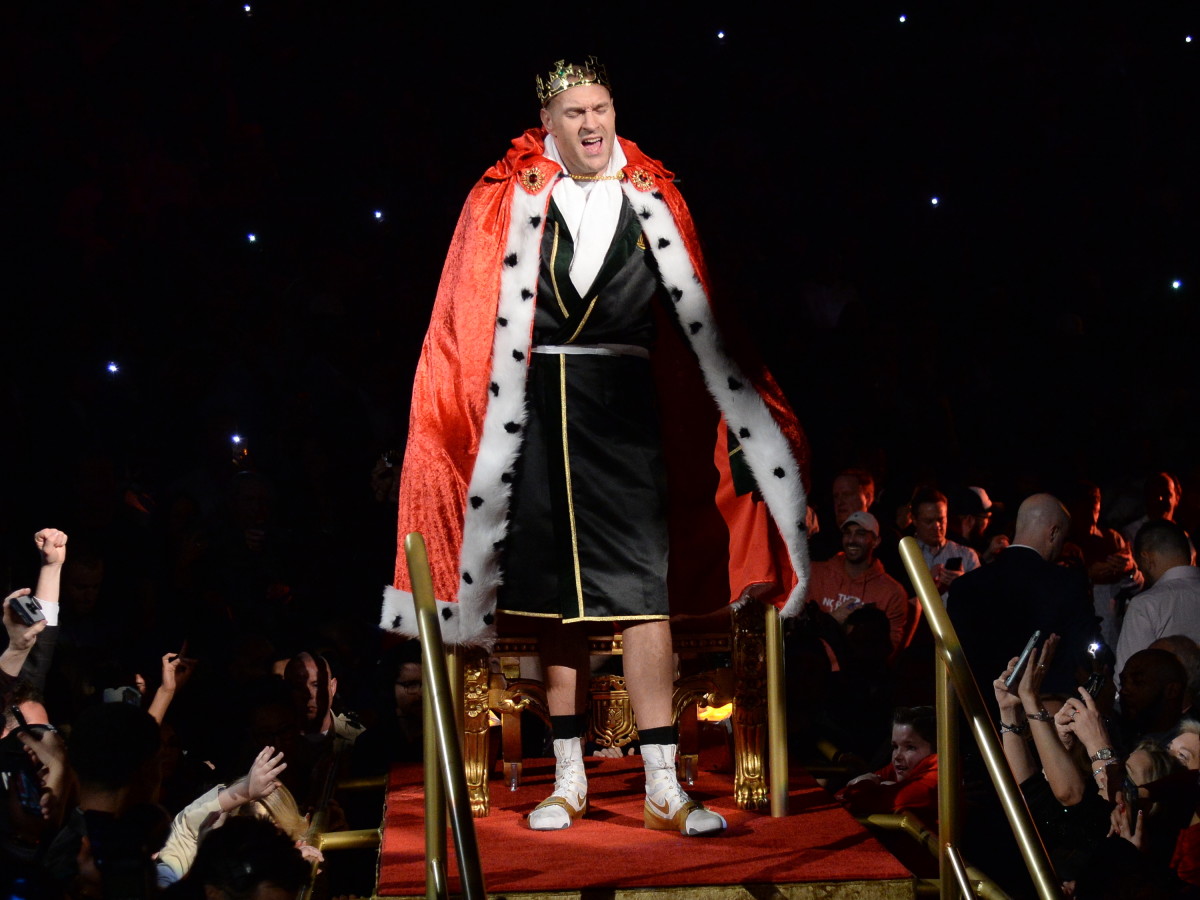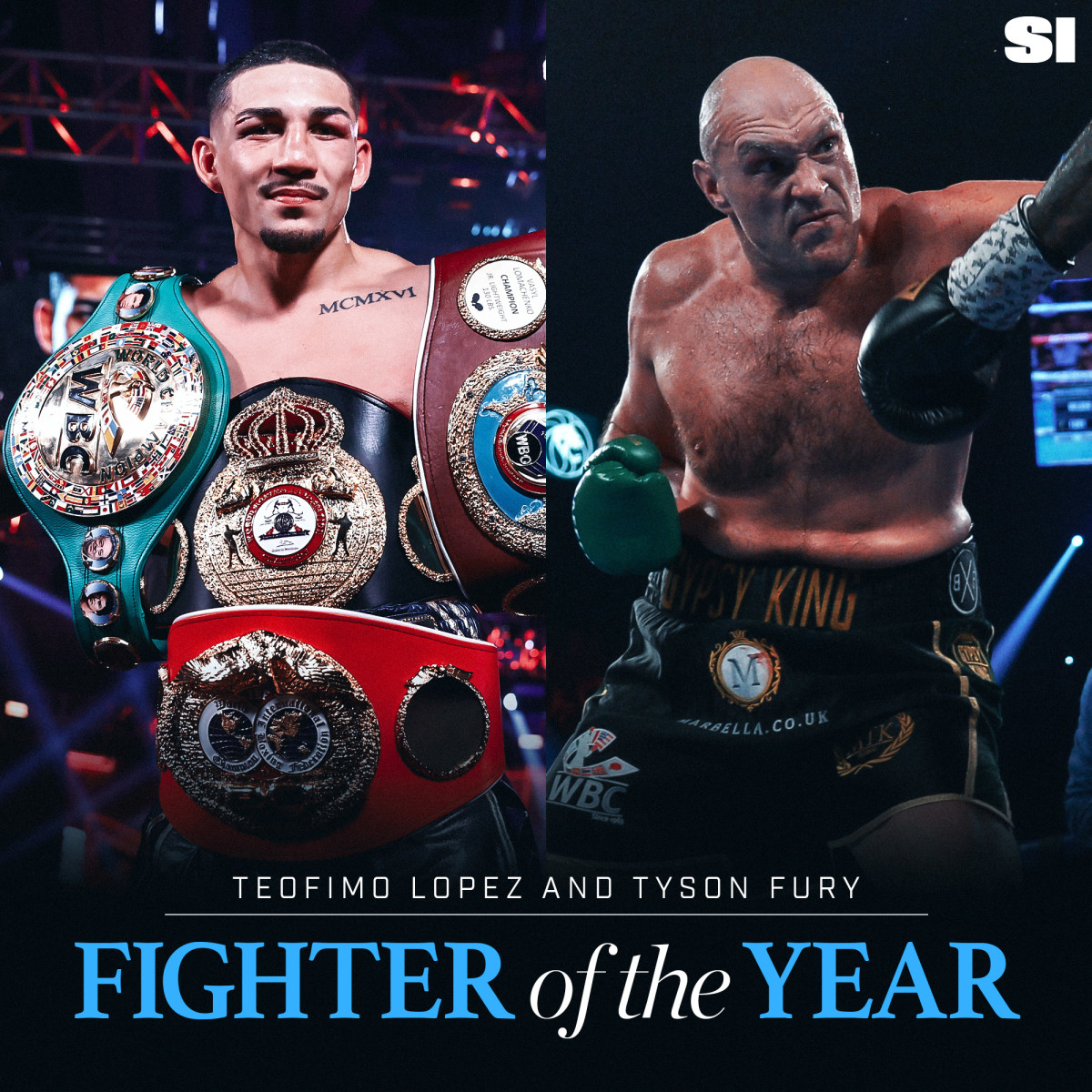Why Tyson Fury Is Sports Illustrated's 2020 Fighter of the Year
The image seems so strange now, as if transported from another time, another world, rather than last February. There went Tyson Fury, into the MGM’s Grand Arena in Las Vegas, the crowd unmasked, packed together, screaming and breathing and coughing and not yet aware of something called social distancing. They were primed for the kind of heavyweight fight that once defined not just boxing but all of sports. And they watched, as Fury sped to the ring not by strut or by stroll or by march. No, he sailed into the ring by throne.

Four men carried the fancy chair upon which Fury sat. Top Rank officials, who now promote the 32-year-old champion, told me they paid $1,100 for the throne on Amazon. Fury wore a crown and a robe and blew kisses to the crowd packed together like sardines. I remember the energy, the way it feels in the minutes before the opening bell sounds for a massive fight like that one, the goose bumps that rise on thousands of arms. There’s nothing like it in sports, particularly with the heavyweights.
It’s fair to call what’s happening in that division a renaissance, if not a return to the glory days of Ali, Frazier, Holmes, Foreman and so many others. This is not that. But it’s compelling. It’s Deontay Wilder, Fury’s opponent for their rematch, the man with a right hand as powerful as anything boxing has ever seen. In their 2018 bout, Wilder hit Fury so hard that Fury splayed out on his back, his eyes rolling back in his head. That Fury ultimately rose, like The Undertaker, securing a draw, only made their second meeting more enticing, making it a must-watch event in the wider world of sports. That Anthony Joshua was KO’d by Andy Ruiz and came back to ascend to the top of the division only makes the heavyweights as interesting as they’ve been since Mike Tyson was getting face tattoos.

Fury is Sports Illustrated’s Fighter of the Year for what happened next, not just for beating Wilder but for how he beat him and what it meant. His plan was a strategic masterpiece. He knew firsthand –firstface?–how hard Wilder could punch, but rather than try and dance away or counter, Fury settled on a smothering attack. He gained a bunch of weight before the right so that he could move in closer. He weighed 273 pounds when he sat atop that throne. He wanted to close the distance, making it harder for Wilder to set up or lean into a big right. Fury did that brilliantly, and when he did close the gap between them, something unexpected happened: he hurt Wilder, doing to Wilder what Wilder does to other opponents, bashing him, over and over, even drawing blood. The crowd went bananas, for a heavyweight fight that felt like a heavyweight fight. Going forward, boxing needs more of them.
The referee stopped the bout in the seventh round, as Fury triumphed by technical knockout. Wilder made all sorts of excuses in the aftermath–blaming his trainer, the weight of his ring-walk costume, saying that his water bottle had been spiked–but the referee made the correct call. Fury was that dominant, and Wilder needed to be saved from long-term damage to himself.
Let’s not forget Fury’s path to that fight: the Wladimir Klitschko upset, ending the champion’s 11-year reign; the struggles with drug and alcohol addiction, the hundreds of pounds gained and lost; the mental health advocacy. Fury never ducked anything, Wilder included. Fury deserves Fighter of the Year for all of that–and for what could, should and hopefully will happen in 2021.
His victory over Wilder sets up myriad possibilities, all of which seem interesting. There’s constant chatter between Fury and Joshua to stage the kind of mega-fight that would sell out Wembley Stadium. Should that blockbuster be made, there’s little reason to think they wouldn’t fight two or three times. There’s a third bout with Wilder to be made, too, if the American can shelve the excuses long enough to make it. And there are plenty of other contenders in a restocked division, the resurgence not beginning now but having been in the works for a few years.
At the front of that is Fury, a boxer who can punch and move, a gypsy who loves to entertain, an athlete as compelling as anyone in sports. It’s possible, maybe even likely, that he wins this honor next year, and that would mean he fights at least Joshua or Wilder, and that means boxing and sports in general will be better off.
